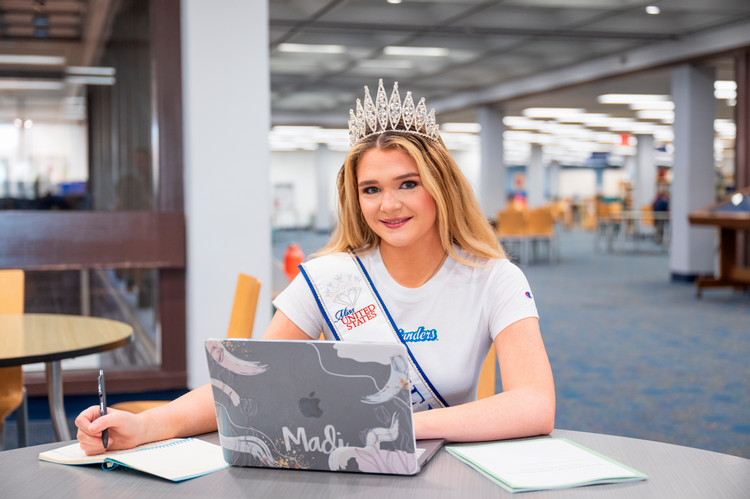Rescue, Research, and the Skies of Tomorrow: TAMU-CC’s Autonomy Research Institute Demonstrates Future of Flight
CORPUS CHRISTI, Texas – Every winter, when cold snaps sweep across the Texas coast, hundreds of sea turtles float in stunned silence — paralyzed by the sudden chill, waiting for help that may come too late. For years, rescuers have combed the bays and beaches on foot and by boat, scanning for signs of life. But now, thanks to a new generation of autonomous aerial technology, the search is faster, broader, and more precise — and its implications extend far beyond sea turtle rescue.
On Sept. 24, as part of an Autonomous Aviation Demonstration hosted by Texas A&M University-Corpus Christi’s Autonomy Research Institute (ARI), an unmanned aircraft system (UAS) swept low over the Corpus Christi Bay shoreline. Its camera scanned the waters for a single motionless turtle — in this case, a mockup of a cold-stunned animal.
“That’s exactly the kind of real-world challenge this technology is built for,” said Tye Payne, ARI Associate Director for Public Operations. “The same system that can locate a cold-stunned sea turtle can also support infrastructure monitoring, ecological protection, and search-and-rescue operations after a natural disaster or help first responders survey damage in places too dangerous for people to go.”
The demonstration, headquartered out of the Texas State Aquarium, highlighted just how far ARI has come since its redesignation from the Lone Star UAS Center of Excellence and Innovation (LSUASC) to a research institute. Their story began in 2013, when LSUASC was selected as one of six FAA UAS test sites in the nation. At the time, unmanned systems were still viewed largely as military tools, so the mission then was to demonstrate the safe integration of UAS into the national airspace.
Behind the scenes of the demonstration was, perhaps, ARI’s most impactful accomplishment — building a collaborative network designed to support Advanced Air Mobility (AAM) activities well into the future. This effort has united federal agencies, private-sector innovators, and academic institutions in a shared mission to advance autonomous flight technologies and integrate them into the nation’s airspace. Through partnerships with industry leaders like Avision, ANRA Technologies, AAMTEX, and OneSky Systems, ARI has helped establish a framework that extends beyond research projects to include regulatory guidance, operational testing, and standards development. These partnerships ensure that ARI’s work is not done in isolation. Each project feeds into a broader system of data-sharing, scenario modeling, and safety validation that informs national decision-making around autonomy.
“What we’re really building is the infrastructure for collaboration,” Payne said. “It’s not just about a single demonstration — it’s about creating the relationships, data pipelines, and test environments that the FAA and our partners will rely on as AAM moves from concept to reality.”
Under the leadership of Mike Sanders, Assistant Vice President and ARI Executive Director, LSUASC grew rapidly, pioneering research in safety protocols, flight operations, and real-time data systems. As autonomous technology expanded beyond drones into ground, maritime, and space applications, the need for a broader, more flexible research framework became clear. In 2024, ARI was born.
“What began as a proving ground for drones has become a launchpad for innovation,” Sanders said. “We’re now driving research that spans autonomy, advanced air mobility, and how real-time data shapes decision-making.”
In April 2025, ARI was selected to lead the new Federal Aviation Administration Center for Advanced Aviation Technology (CAAT) on behalf of the Texas A&M University System. It’s an initiative of up to $190 million in funding over the next several years.
“We’re not just testing ideas in a lab, we’re building real-world solutions,” Sanders said. “It’s happening here. It’s happening now. We’re showing the world what that future looks like.”
Back on the shoreline, the mock turtle was located by the drone and recovered. If it had been a real animal, it would have then been rehabilitated by the experts at the Texas State Aquarium, part of a decades-long conservation effort that has saved thousands of endangered reptiles from cold-stunning events. But for the ARI team, the demonstration wasn’t just a success story for wildlife rescue — it was proof that autonomous systems can meet real human needs, too.
“The problems may change,” Payne said, “but the mission stays the same: use autonomy to make our communities safer, more resilient, and better prepared for whatever comes next.”































